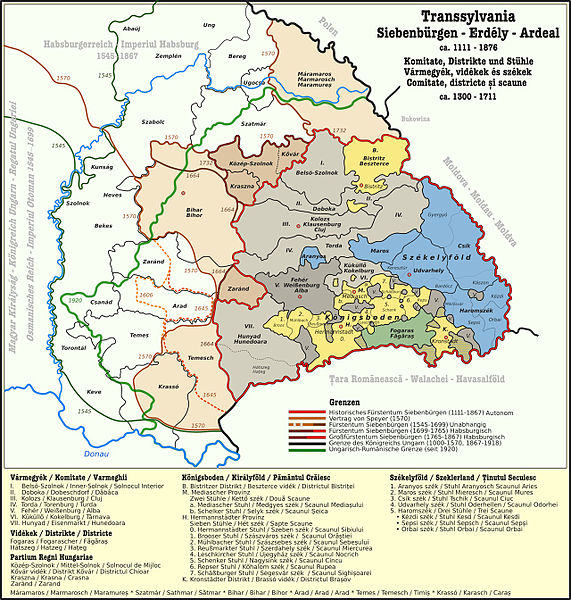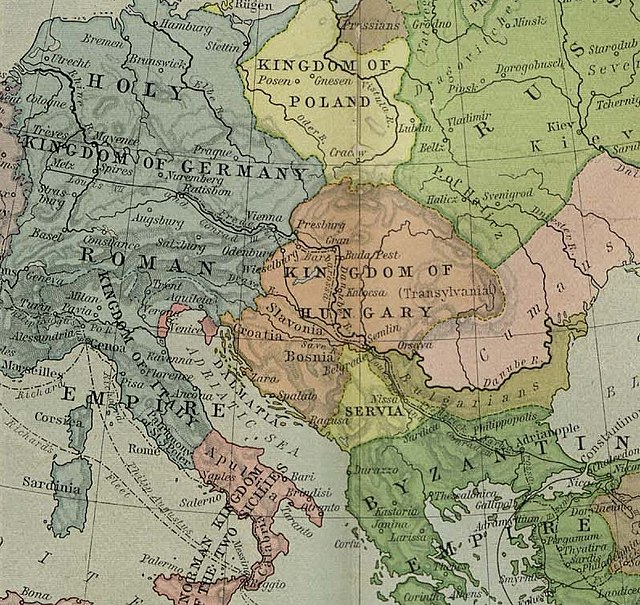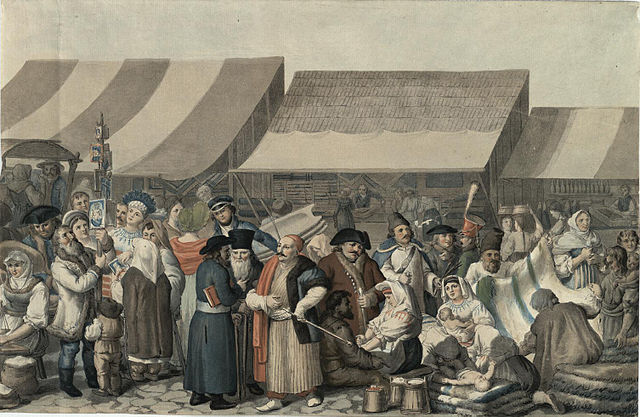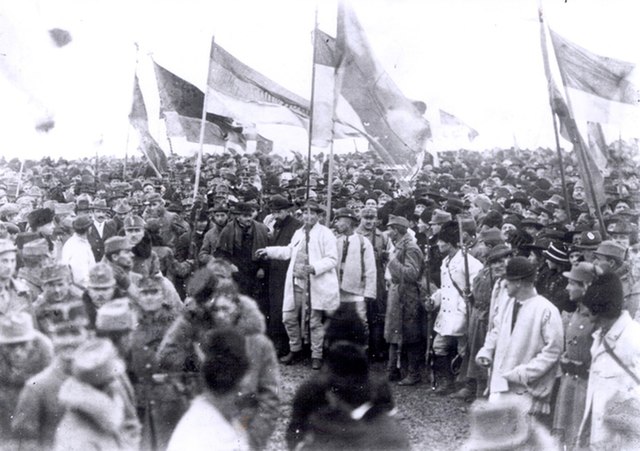The Voivode of Transylvania was the highest-ranking official in Transylvania within the Kingdom of Hungary from the 12th century to the 16th century. Appointed by the monarchs, the voivodes – themselves also the heads or ispáns of Fehér County – were the superiors of the ispáns of all the other counties in the province.
Changes in the administration of Transylvania between 1300 and 1867
Restored Kőhalom Castle (Cetatea Cohalmului, Romania), held by the voivodes between 1324 and c. 1418
Ruins of Déva Castle (Cetatea Deva, Romania), a fortress of the voivodes from 1321 to c. 1443
Baron István Dobó of Ruszka, last voivode appointed by a king of Hungary (1553–1559)
Transylvania is a historical and cultural region in Central Europe, encompassing central Romania. To the east and south its natural border is the Carpathian Mountains and to the west the Apuseni Mountains. Broader definitions of Transylvania also include the western and northwestern Romanian regions of Crișana and Maramureș, and occasionally Banat. Historical Transylvania also includes small parts of neighbouring Western Moldavia and even a small part of south-western neighbouring Bukovina to its north east. The capital of the region is Cluj-Napoca.
Kingdom of Hungary in 1190, during the rule of Béla III
Roman city of Apulum
A market scene in Transylvania, 1818
The National Assembly in Alba Iulia (December 1, 1918), declaring the Union of Transylvania with Romania








